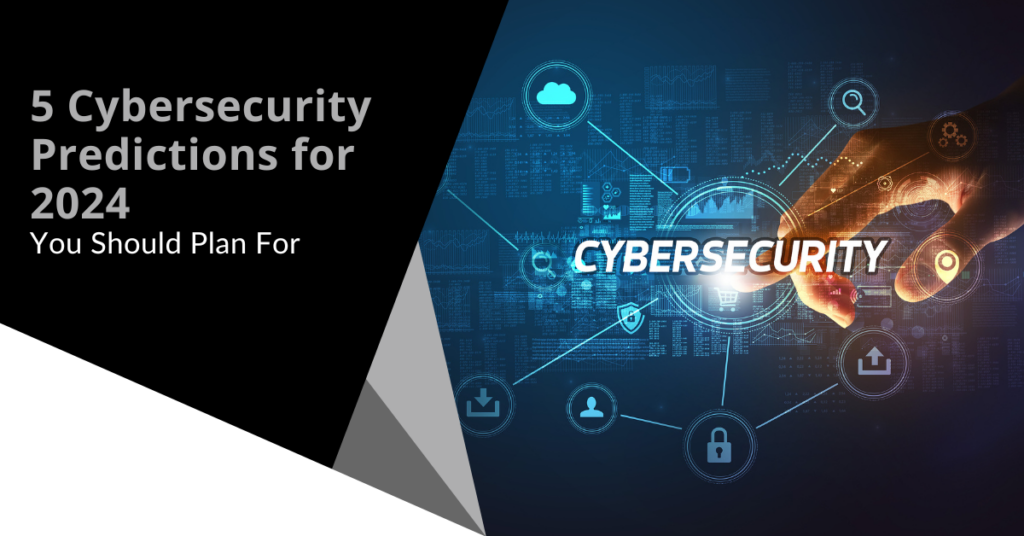Discover 7 Cybersecurity Predictions for 2025 and their impact on digital security.
Wiki Article
Top Cybersecurity Predictions for 2024: Keep Ahead of Emerging Risks
As we come close to 2024, the cybersecurity landscape is positioned for substantial transformation, driven by arising dangers that organizations should not only expect however also tactically address. With regulatory adjustments on the horizon and a crucial emphasis on cybersecurity training, it is vital for companies to reassess their strategies to continue to be durable.Rise of AI-Driven Assaults
As companies increasingly adopt expert system technologies, the potential for AI-driven attacks is coming to be a critical concern in cybersecurity. Cybercriminals are leveraging AI to improve the refinement and efficacy of their attacks, developing a landscape where typical protection actions might falter. These strikes can make use of machine learning formulas to determine susceptabilities in systems and networks, bring about more targeted and destructive violations.AI can automate the reconnaissance phase of an attack, making it possible for adversaries to gather huge amounts of information swiftly (cyber attacks). This ability not just shortens the moment called for to introduce an attack however also increases its precision, making it harder for protectors to prepare for and alleviate threats. Additionally, AI can be used to create convincing phishing schemes, produce deepfake content, or manipulate data, additionally complicating the cybersecurity landscape
Organizations must prioritize the combination of AI-driven cybersecurity solutions to counter these emerging dangers. By utilizing advanced risk detection systems, companies can boost their capacity to determine and counteract AI-generated strikes in genuine time. Continual financial investment in training and awareness programs is likewise crucial, as it furnishes workers to identify and react to prospective AI-driven dangers effectively.
Enhanced Ransomware Class
The rise of AI-driven assaults is not the only fad reshaping the cybersecurity landscape; ransomware attacks have actually additionally evolved, coming to be increasingly advanced and targeted. As cybercriminals refine their methods, organizations deal with heightened risks that call for flexible methods to minimize potential damage.
Modern ransomware hazards currently take advantage of progressed techniques, such as dual extortion, where aggressors not only encrypt data but likewise intimidate to leakage delicate info if their demands are not met. This adds an extra layer of stress on targets, commonly engaging them to pay ransoms to secure their reputations and client count on.
Additionally, using automated tools and artificial intelligence formulas by wrongdoers has streamlined the assault procedure, enabling them to recognize susceptabilities extra successfully and customize their techniques versus specific targets. Such growths have led to an alarming surge of attacks on crucial infrastructure, healthcare systems, and supply chains, highlighting the requirement for robust cybersecurity structures that prioritize real-time hazard discovery and response.
To counter these developing risks, organizations must purchase thorough training, progressed protection innovations, and event feedback plans that incorporate lessons learned from past ransomware incidents, guaranteeing they continue to be one step ahead of progressively complicated attacks.
Development of IoT Susceptabilities
With the quick development of the Web of Things (IoT), susceptabilities linked with these interconnected devices have actually become a crucial problem for organizations and individuals alike. The spreading of smart devices, from home appliances to industrial sensing units, has actually produced an expansive strike surface for cybercriminals. Several IoT devices are deployed with minimal security methods, commonly using default passwords or outdated firmware, making them vulnerable to exploitation.As tools end up being interconnected, the potential for large-scale assaults increases. As an example, compromised IoT devices can function as entrance factors for assaulters to infiltrate even more safe networks or launch Dispersed Rejection of Service (DDoS) attacks. 7 Cybersecurity Predictions for 2025. The lack of standardization in IoT security gauges further aggravates these susceptabilities, as varying manufacturers carry out differing degrees of security
Moreover, the enhancing class of malware targeting IoT cyber attacks gadgets poses substantial risks. Danger actors are constantly establishing brand-new methods to make use of these weaknesses, bring about potential information breaches and unauthorized accessibility to sensitive info. As we move right into 2024, companies need to focus on IoT protection, executing durable actions to secure their networks and reduce the risks connected with this quickly growing landscape.
Regulatory Adjustments Affecting Safety And Security

In 2024, we anticipate to see much more rigorous compliance demands for organizations, especially those that make or deploy IoT gadgets. The intro of regulations such as the European Union's Cyber Durability Act and updates to existing structures like the NIST Cybersecurity Structure will highlight protection deliberately. Organizations will be mandated to carry out durable safety and security measures from the initial phases of item growth, guaranteeing a proactive stance versus potential vulnerabilities.
Additionally, governing bodies are likely to impose significant charges for non-compliance, compelling companies to focus on cybersecurity financial investments. This change will certainly not just boost the overall safety and security pose of organizations however will certainly likewise cultivate a society of accountability in securing individual information. As laws tighten up, the obligation will significantly drop on firms to show conformity and guard versus the ever-evolving dangers in the electronic landscape.
Focus on Cybersecurity Training
Organizations' commitment to cybersecurity training is ending up being progressively important as dangers advance and assault vectors increase. With cybercriminals constantly developing sophisticated techniques, it is paramount for employees in all degrees to comprehend the dangers and acknowledge their role in mitigating them. Comprehensive training programs equip team with the expertise and abilities needed to determine potential hazards, such as phishing strikes, social engineering strategies, and malware.Moreover, a society of cybersecurity recognition promotes vigilance amongst workers, decreasing the likelihood of human error, which remains a substantial vulnerability in many companies. Routinely updated training components that reflect the most recent hazards will guarantee that staff remain informed and efficient in reacting properly.


In 2024, companies will likely focus on ongoing education and simulation exercises, allowing workers to practice their action to real-world situations. Partnership with cybersecurity professionals for customized training services might additionally become a lot more commonplace. Ultimately, buying employee training not only reinforces an organization's defense posture however also grows a positive technique to cybersecurity, reinforcing the concept that security is a shared responsibility throughout the venture.
Final Thought
To conclude, the cybersecurity landscape in 2024 will be shaped by the rise of AI-driven strikes, significantly innovative ransomware techniques, and the growth of vulnerabilities connected with IoT tools. Regulative modifications will necessitate boosted conformity procedures, emphasizing the value of incorporating protection by layout. Furthermore, a strong focus on thorough cybersecurity training will be important in growing a business society resilient to emerging risks. Proactive adaptation to these patterns will certainly be vital for efficient defense approaches.Report this wiki page